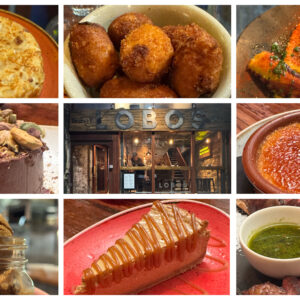Although Louis Jadot, and Burgundy for that matter, is likely to need no introduction thanks to the over 160 years making wine history the producer has, I’ll start at the beginning. To support with orientation if you’re not yet familiar with the area, Burgundy (Bourgogne), is found in France, stretching south of the city of Dijon (yes, quite famous for its mustard). The wines tasted today in particular were quite close to Beaune itself. This classic french wine region produces both red and white wines, mainly made from Chardonnay and Pinot Noir and Louis Jadot is one of the most prestigious producers of the area.
Frédéric Barnier has been Louis Jadot’s winemaker since 2013 and has taken us on a tour through some of the northern appellations of Côte de Beaune, guiding us through three whites and three reds.
Starting with Pernand-Vergelesses Les Combottes, a fresh, citrus and easy drinking silkiness, this Chardonnay has only but a hint of oak and lees ageing. He’s explained that the name Combotte means small valley in French, which determines the character he’s wishing to express through low intervention techniques.
Following with a Beaune Premier Cru Grèves, Le Clos Blanc, slightly more savoury and mineral and finishing the whites with a Corton-Charlemagne Grand Cru. This last one more textured and complex.
We’ve also had the chance to taste a Pinot Noir from the same area of the first Chardonnay, the Pernand-Vergelesses Premier Cru Clos de la Croix de Pierre, where he explained that it’s been named after an old stone cross from the area. All three reds were incredibly elegant and delicate, red fruits, flowers and some spices, with hints of spices, leather and tobacco in the background. Perhaps one the most interesting facts he shared was that the Corton-Pougets Grand Cru is the only vineyard in the appellation still making red wine as apparently some of the other producers in the area have turned to the more profitable and yielding Chardonnay.
In addition to the amazing wines tasted during the presentation, we were lucky enough to be privy to what’s currently happening in Burgundy and how Louis Jadot is preparing for the future. Frédéric shows his commitment to the terroir not only by minimising intervention to the wines so you can trace them back to the origins and let the true expression of the area shine but with applying sustainable practices in the vineyard too.
Climate change is something that can’t be argued against when comparing vintages, and as a producer they’ve implemented environmentally friendly practices focused in biodiversity conservation and water management amongst others. As they continue to see warmer and drier weather, they recognise that the classic Burgundy doesn’t look or taste the same as it had previously and set the new standard amongst the 2018 and 2017 vintage. As a consequence, they are also experimenting with new and exotic rootstocks that would better manage in draught conditions as they’re also experiencing a reduction in the current vines producing lifespan, as some are currently sitting at 20 years when they should be looking at 50-80 years, with some going up to a 100 or more.
Nevertheless, warmer and drier weather also means ripeness for the grapes and therefore a more mature wine giving the possibility of enjoying great wines younger and an increase in intensity of aromas which is a positive outlook for the region.
.
Wines tasted
- Pernand-Vergelesses, Les Combottes, 2018 (Famille Gagey)
- Beaune Premier Cru Grèves, Le Clos Blanc, 2018 (Famille Gagey)
- Corton-Charlemagne Grand Cru, 2018 (Héritiers Louis Jadot)
- Pernand-Vergelesses Premier Cru, Clos de la Croix de Pierre, 2017 (Héritiers Louis Jadot)
- Beaune Premier Cru, Clos des Ursules, 2017 (Héritiers Louis Jadot)
- Corton-Pougets Grand Cru, 2017 (Héritiers Louis Jadot)
MAISON LOUIS JADOT
HATCH MANSFIELD AGENCIES LIMITED





